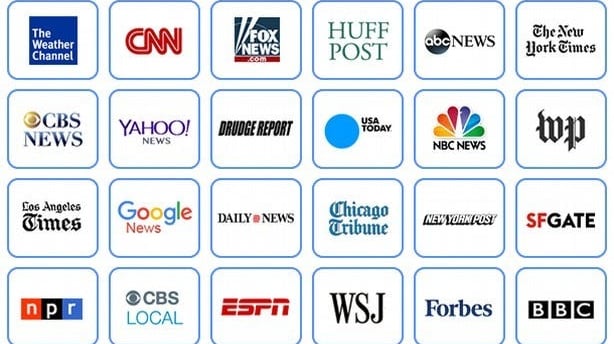The Importance of Consistency in PR Messaging Across Media Channels
PR AND MEDIABUSINESS TIPSBRANDING TIPSPRESS RELEASEMEDIA
2/18/20255 min read


In today’s fast-paced and interconnected world, brands are competing for consumer attention across an ever-expanding number of media channels. From traditional print and television to social media and blogs, the opportunities for reaching audiences are limitless. However, this multitude of platforms can also present a challenge for public relations (PR) teams in ensuring that their messaging remains consistent across every channel.
Consistency in PR messaging is crucial for building brand recognition, trust, and loyalty. When a brand’s message is fragmented or contradictory across different media channels, it can confuse or alienate its audience, ultimately damaging the brand’s reputation. By maintaining a unified message across all communication channels, PR teams can reinforce the brand’s identity and values, fostering deeper connections with their target audience.
In this article, we explore why consistency in PR messaging is so important, how it impacts brand perception, and how PR professionals can ensure a coherent and unified message across various media channels.
1. Strengthens Brand Identity
One of the primary reasons consistency in PR messaging is essential is that it helps strengthen and solidify a brand's identity. When consumers encounter the same message across different platforms, they begin to associate certain values, tones, and visuals with the brand. A consistent message helps to build a cohesive and recognizable brand presence that resonates with the target audience.
Building Recognition and Trust
Brands that are consistent in their messaging are more likely to be recognized and trusted by their audience. When a brand’s values and messages remain the same, regardless of the channel or medium, consumers feel that they can rely on the brand to deliver a consistent experience. This trust is crucial for building long-term relationships with customers.
Example: If a sustainable clothing brand consistently emphasizes its commitment to eco-friendly practices across social media, press releases, and advertisements, consumers will begin to associate the brand with sustainability, and this value will become a key part of its identity.
Visual Consistency
Beyond the message itself, visual elements such as logos, color schemes, typography, and overall design also need to remain consistent across all channels. Consistent branding visuals enhance recognition and make it easier for consumers to identify the brand, whether they’re browsing a website, reading a press article, or seeing a social media post.
Example: Brands like Coca-Cola and Apple have established powerful visual identities that remain consistent across every media channel. Their logos, color schemes, and messaging are instantly recognizable, reinforcing their brand identity.
2. Builds Consumer Confidence and Trust
When a brand delivers a consistent message, it demonstrates reliability and transparency. Inconsistent messaging can lead to confusion, raising doubts about the brand’s authenticity or values. Consumers want to know what a brand stands for, and inconsistent PR efforts can make them question whether the brand is genuine or just trying to sell something.
Consistency Creates Emotional Connection
By consistently communicating the same message across different platforms, brands can deepen their emotional connection with their audience. Consumers are more likely to trust brands that are clear and consistent in their messaging, which can ultimately lead to increased customer loyalty.
Example: A tech company that continuously communicates its commitment to innovation, user-friendliness, and quality will foster consumer trust and loyalty, as customers know exactly what to expect from the brand.
The Risk of Inconsistency
When messaging becomes inconsistent, it can undermine the brand’s credibility. For example, if a company promotes itself as environmentally friendly on one platform but takes actions that contradict this message (such as using unsustainable materials in its products), consumers may begin to view the brand as dishonest or opportunistic. This can lead to a loss of trust, customer disengagement, and potential damage to the brand’s reputation.
3. Enhances Message Clarity and Impact
Consistency in messaging across media channels also enhances the clarity and impact of the brand’s message. When the core message remains the same across various platforms, consumers are more likely to understand and internalize the brand’s values, products, and mission. This clarity enables brands to convey their message effectively, no matter where or how it is being delivered.
Reinforcing the Message Across Touchpoints
The more times a consumer encounters the same message, the more likely they are to remember it. Consistency across media channels ensures that a brand’s key message is reinforced at every touchpoint. Whether a customer sees a tweet on Twitter, a post on Instagram, a blog article, or a TV commercial, the core message should be the same to make a lasting impact.
Example: A luxury brand that uses consistent messaging about its exclusivity, craftsmanship, and attention to detail across all media channels ensures that the target audience understands what makes the brand special and why they should invest in it.
Avoiding Confusion
When a brand uses different messages for different channels, it risks creating confusion among its audience. For instance, if a clothing retailer promotes discounts on Instagram but focuses on luxury and exclusivity in its press releases, potential customers may become unsure of what the brand actually stands for. A confused consumer is less likely to engage with the brand or make a purchase.
4. Improves Crisis Management and Brand Protection
Consistency in messaging becomes especially important during times of crisis or controversy. When a brand faces a public relations challenge—such as a product recall, a negative review, or an employee scandal—consistent messaging is key to controlling the narrative and protecting the brand’s reputation.
Unified Response to Crisis
In a crisis, having a consistent message across all media channels allows the brand to speak with one voice, reducing the risk of mixed signals. A well-crafted, consistent statement delivered across the company’s website, social media channels, press releases, and media interviews ensures that the audience receives the same message, helping to rebuild trust and transparency.
Example: When a company faces a crisis, such as a data breach, it’s essential for its messaging to be consistent across all channels. A unified approach shows that the company is taking the matter seriously, addressing the issue, and working to resolve it, which can mitigate the damage to its reputation.
Clarity During Uncertainty
During a crisis, customers and stakeholders are often looking for answers and reassurance. A consistent message across media channels provides clarity and reduces the uncertainty that can arise during these times. Brands that are clear, transparent, and consistent in their responses are more likely to regain consumer trust after a crisis.
5. Maximizes PR Efforts and ROI
Consistency also helps maximize the effectiveness of PR campaigns and drives a better return on investment (ROI). When messaging is consistent, PR campaigns are more likely to generate the desired results, whether that’s increased media coverage, higher engagement rates, or better sales performance.
Leveraging Cross-Channel Synergy
A consistent PR message across different media channels can create synergy. For instance, a press release announcing a product launch can be complemented by social media posts, blog content, and email marketing that reinforce the key message. This cohesive approach ensures that the brand’s message is amplified and reaches a wider audience, generating greater impact.
Example: A brand launching a new product can generate excitement by posting about it on social media, followed by an interview with a CEO in a major publication. These efforts, when aligned with the same core message, work together to drive attention and awareness, increasing the overall effectiveness of the PR strategy.
Conclusion
Consistency in PR messaging across media channels is essential for building a strong, recognizable brand that consumers trust. By maintaining a unified message, brands can strengthen their identity, foster trust, clarify their values, and protect their reputation. Whether engaging with customers on social media, securing press coverage, or managing a crisis, a consistent approach to messaging ensures that the brand’s voice remains clear and credible.
In an increasingly fragmented media landscape, where consumers are bombarded with information from multiple channels, consistency offers a way for brands to stand out, create meaningful connections, and ultimately drive success. PR professionals must ensure that their messaging remains aligned, across all touchpoints, to build a cohesive and impactful brand presence that resonates with consumers and builds long-term loyalty.
Elevate your brand with our expert services.
admin@xmediaasia.com
+60 195544497
© 2024. All rights reserved.
